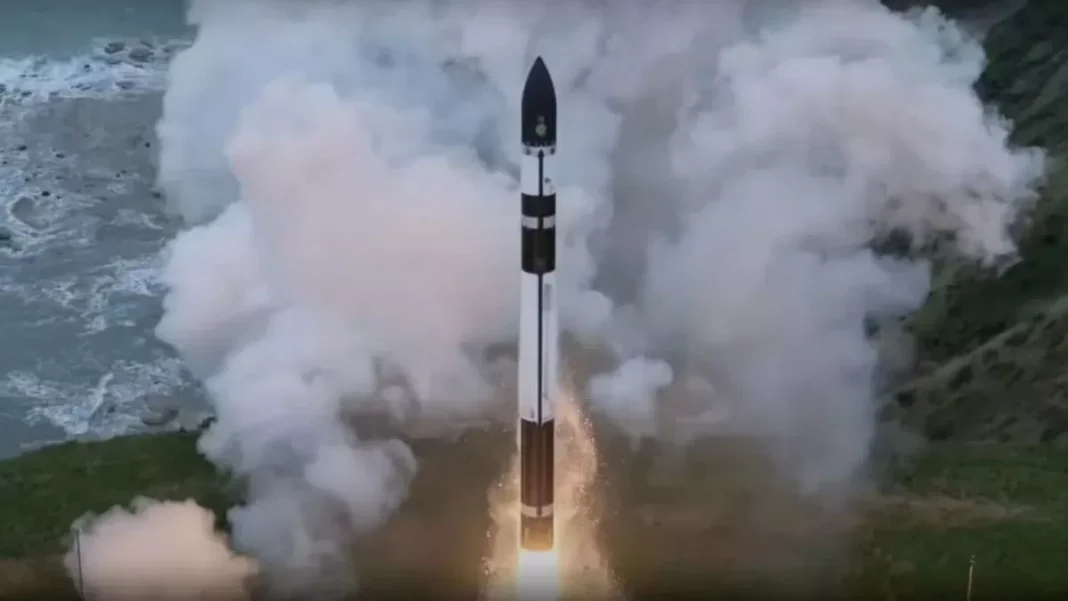On August 5, 2025, history was made as Rocket Lab successfully launched Japan’s QPS-SAR-12 satellite, also known as Kushinada-I, into orbit. The satellite, built by the Institute for Q-shu Pioneers of Space (iQPS), was launched aboard Rocket Lab’s Electron rocket from Mahia, New Zealand. This achievement marks a significant milestone in the field of Earth observation and is a testament to the incredible advancements in space technology.
The QPS-SAR-12 satellite is a synthetic-aperture radar (SAR) spacecraft, designed for high-resolution, all-weather, day-and-night Earth observation. This means that the satellite is equipped with advanced radar technology that allows it to capture detailed images of the Earth’s surface, regardless of weather conditions or time of day. This is a major breakthrough in the field of Earth observation, as it will provide scientists and researchers with a wealth of data and insights that were previously unavailable.
The satellite was built by the iQPS, a leading institute in Japan that specializes in space technology. The iQPS has a long history of developing cutting-edge satellites and has established itself as a pioneer in the field of SAR technology. The QPS-SAR-12 satellite is a testament to their expertise and dedication to pushing the boundaries of what is possible in space.
The launch of Kushinada-I is also a significant achievement for Rocket Lab, a private space company that has been making waves in the industry with its innovative approach to space launches. The Electron rocket, which carried the satellite into orbit, is a small but mighty rocket that has been specifically designed for small satellite launches. This makes it a perfect fit for the QPS-SAR-12 satellite, which is relatively small in size compared to other satellites.
The launch of Kushinada-I is just the beginning of a larger mission for the iQPS. The satellite is part of a growing constellation of SAR spacecraft that will work together to provide a comprehensive view of the Earth’s surface. This will enable scientists and researchers to monitor changes in the environment, track natural disasters, and gather valuable data for various industries such as agriculture, forestry, and urban planning.
One of the most exciting aspects of the QPS-SAR-12 satellite is its high-resolution imaging capabilities. With a resolution of up to 1 meter, the satellite can capture incredibly detailed images of the Earth’s surface. This will be invaluable for various applications, including disaster response, infrastructure planning, and environmental monitoring. The satellite’s all-weather and day-and-night capabilities also mean that it can capture images in areas that are typically difficult to access, such as remote or polar regions.
The launch of Kushinada-I also highlights the growing collaboration between Japan and New Zealand in the field of space technology. Rocket Lab’s launch site in Mahia, New Zealand, has become a hub for small satellite launches, attracting companies and organizations from around the world. This partnership has not only boosted the economy of the region but has also opened up new opportunities for scientific and technological advancements.
The successful launch of the QPS-SAR-12 satellite is a testament to the incredible progress that has been made in the field of space technology. It is a reminder that with determination, innovation, and collaboration, we can achieve great things. The QPS-SAR-12 satellite will play a crucial role in advancing our understanding of the Earth and will pave the way for future advancements in the field of Earth observation.
As we look towards the future, we can only imagine the possibilities that lie ahead. With the launch of Kushinada-I, we have taken another step towards unlocking the mysteries of our planet and using that knowledge for the betterment of humanity. The QPS-SAR-12 satellite is a shining example of what can be achieved when we push the boundaries of what is possible and work together towards a common goal. We can only imagine what other groundbreaking achievements await us in the world of space technology.


